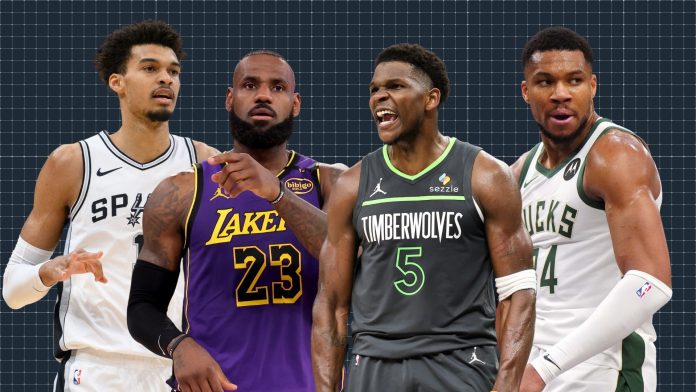NBA TV Ratings Debate with Mark Cuban and ESPN NBA Analyst Richard Jefferson, Who Consider If the Decline of Cable Is to Blame
(Boardroom) — When the NBA’s national television ratings dipped 19% year-over-year in mid-December, countless think pieces, social media posts on both sides of the political spectrum, and hypotheses on what the league should do to bring back viewers reverberated throughout the sporting world and the internet, alike.
Too Many 3-Point Shots?
Perhaps teams were attempting too many 3-point shots. Maybe there weren’t enough American-born young superstars to captivate TV audiences. Could it just have been the migration of our viewing habits from cable to streaming as what we watch on television becomes more fragmented every year?
Then, the NBA Christmas Day slate was the most watched in five years, bringing the overall viewership back to normal, with a 3% year-over-year decline overall and a 5% YoY increase on ESPN and ABC.
“Our Numbers Were Down”
“So basically our numbers were down in the first third of the season in the middle of college football and the NFL, in a political year, and then our numbers after Christmas day are up,” ESPN NBA analyst Richard Jefferson told Boardroom last month. “It’s like checking your pockets in Q1, checking your pockets in Q2, and then, all of a sudden, in Q3, you’re in the black. I think it’s overblown.”
Catching Up With Mark Cuban
Last month, we caught up with Mark Cuban, the Dallas Mavericks minority stakeholder, Shark Tank panelist, and Cost Plus Drugs founder, about all things team ownership. He shared thoughtful insights on the future of the game, noting that it comes down to whether NBA fans would rather watch actual games or just the highlights.
“The NBA has dominated sports on social media globally,” Cuban told Boardroom. “No one comes close. We have so many amazing highlights that not only get NBA fans excited, but crossover to non-NBA fans as well. That’s the good news and the bad news. Fans know they can see our best plays on social media almost in real time. Too many prefer that approach.”
The NBA has 48 minutes of live game action per contest to the NFL’s 15 minutes, Cuban continues, with basketball more likely to produce more viral social media clips than even a football playoff game.
“But it also makes it easier to follow the highlights only and commit the same 15 minutes or less that an NFL game requires,” Cuban said. “If fans prefer that approach, that can be a long-term issue for the NBA if they can’t create as much revenue from those highlights.”
Fans Opting To Watch Highlights on Social Media
While more fans opting to watch highlights on social media may be one factor, Jefferson doesn’t believe it tells the whole story of the NBA ratings debate. With fewer cable subscribers than ever before, he said, it’s unfair to compare today’s ratings with pre-pandemic viewership. But, as the next TV deal replaces Warner Bros. Discovery’s TNT with Amazon’s Prime Video, Cuban thinks the power of the Amazon and Disney+ homepages could drive more views from the casual fans stumbling onto NBA content.
“That’s a lot of power for those platforms that hopefully the NBA can leverage in their deals,” Cuban said.
While any uptick or decrease in the NBA ratings will trigger plenty of discourse going forward, the league’s move toward network television and streaming and away from the cable model will go a long way toward determining whether basketball is pivoting toward where content is now consumed, or whether fans simply would rather just watch a few minutes of highlights instead of a two-and-a-half-hour game.








